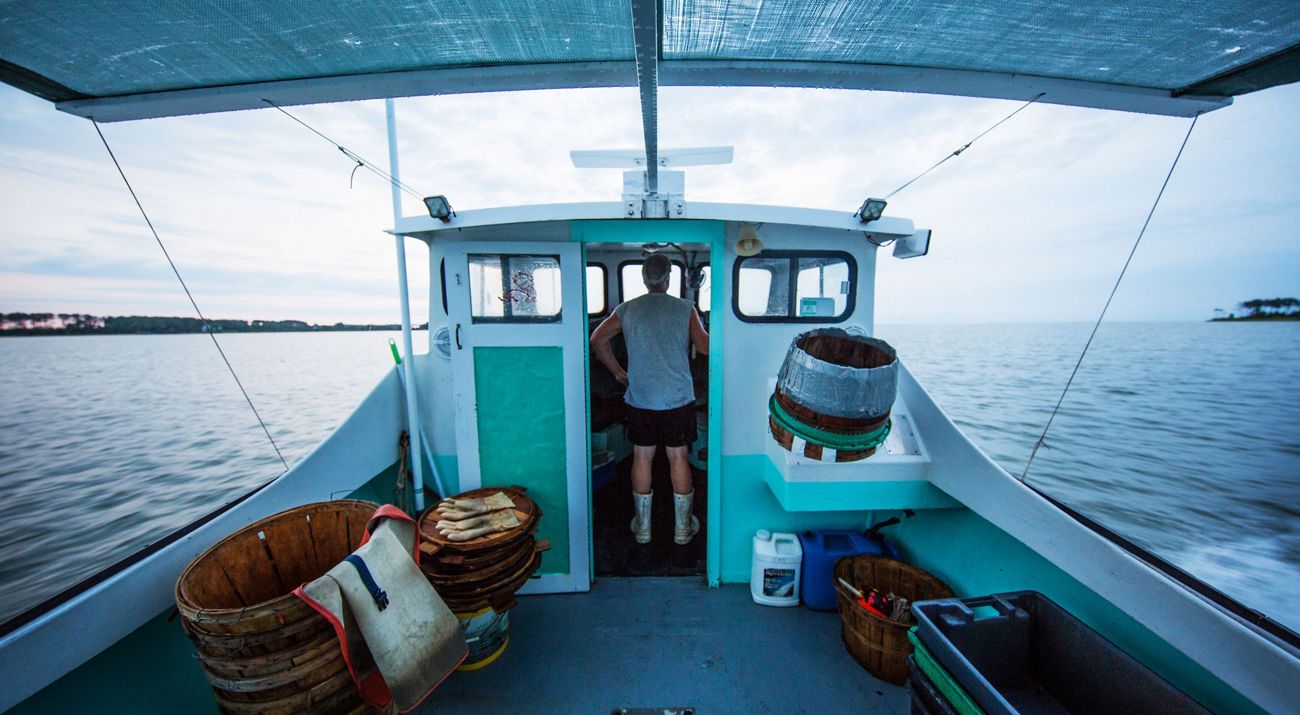
Chesapeake Bay Highlights
Ten ways we’re working to secure clean water and protect critical habitats in our nation’s largest estuary.
The bay's health and its ability to meet our needs depend on clean water. That's why so much of our work focuses on using nature and natural filters like forests and wetlands to help reduce pollution in the streams and rivers that flow into the Chesapeake Bay.
Our team collaborates across six states - 64,000 square miles of streams and rivers, forests, farms and cities — to protect and restore the bay. Your support will mean cleaner water, healthier habitat and more abundant life in the Chesapeake Bay.
Learn more about how we work with these ten highlights from our bay work to date.
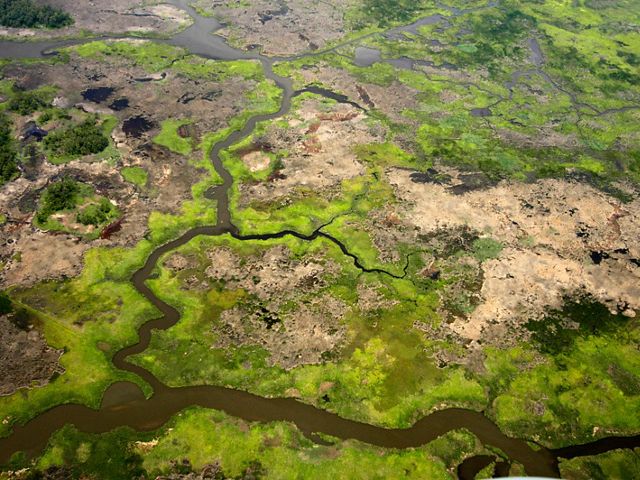
1. Accelerating wetland restoration efforts across the watershed
Wetlands play a critical role in Chesapeake Bay water quality by slowing freshwater entering the bay and trapping nutrients and sediment. Making a real impact on bay water quality requires bringing back some of the 1.5 million acres of wetlands that have been lost in the watershed.
A grant of nearly $1 million awarded in December, 2019 through the Chesapeake Bay Stewardship Fund (CBSF) will accelerate these efforts across three bay states.
The grant was one of 47 announced by the National Fish and Wildlife Foundation (NFWF), which partners on the fund with two other EPA grant programs. An additional $2.5 million in funding will be leveraged from the grant from the Maryland Department of Natural Resources, the Virginia Outdoors Foundation, Ducks Unlimited and other partners.
In Maryland, the funding will help TNC and partners expand the ongoing program to reconnect the Pocomoke river with its historic floodplains, which is already one of the largest restoration projects in the state’s history.
In Delaware, the funds will help TNC to restore over 60 acres of wetlands in the Great Cypress Swamp in partnership with Delaware Wild Lands and Ducks Unlimited adding to 750 acres of previously restored cypress and Atlantic white cedar wetlands.
In Virginia, TNC will work collaboratively with the U.S. Fish and Wildlife Service (USFW), Virginia Outdoors Foundation and other partners with the Rappahannock River Land Protection Partnership (RRLP). TNC will leverage this 20-year Virginia partnership to engage private landowners along the Rappahannock River in conservation programming.
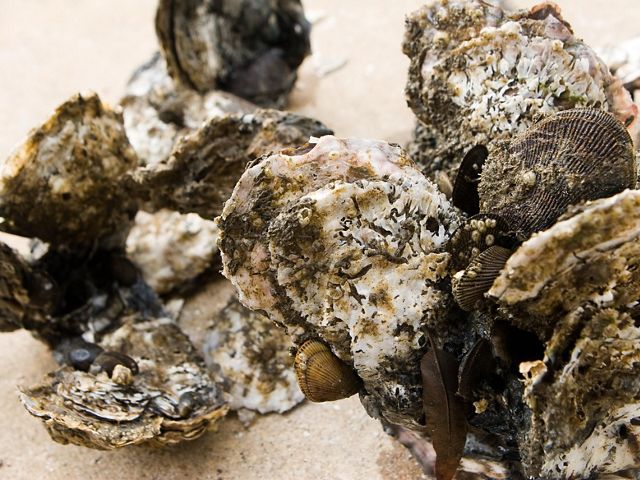
2. QUANTIFYING SUCCESS
In 2015, we were part of a coalition of partners that completed the world’s largest-ever oyster restoration project (to date) in Harris Creek, a tributary of Maryland's Choptank River. This remarkable project saw over 2 billion oysters planted over 350 acres.
Not stopping there, we then launched an effort in partnership with the Virginia Institute of Marine Science and University of Maryland to measure the pollution reduction ability of the oyster reefs as they grew over the next two years.
Using a web-based model, the study found that the restored reefs have the potential to remove one million pounds of nitrogen from the Chesapeake Bay over a decade. In addition, the restored reefs are able to filter the full volume of Harris Creek in less than ten days during summer months.
The study shows that oyster restoration is an important and cost-effective addition to the suite of approaches that make up Bay recovery efforts. What makes this such a smart investment is not just the role oysters can play in water quality, but also the numerous co-benefits that come with a healthy reef.
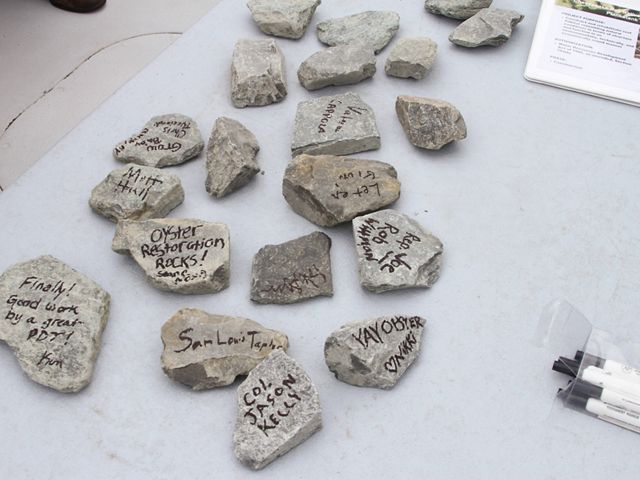
3. Bringing Back an Icon
In Virginia’s Piankatank River we’re building on the success of three sanctuary reefs totaling 50 acres that were constructed in 2014, 2015, and 2017. In 2018 we completed construction on an additional 10 acres of reef.
With an economic return of $7 for every dollar invested, oyster reef restoration in the Piankatank River is an important step towards bringing a vital natural—and economic—resource back to the Chesapeake Bay.
Working with partners, including The Army Corps of Engineers, Virginia Marine Resources Commission (VMRC), and NOAA, we’re steadily moving closer to a goal of 428 acres of oyster restoration in the Piankatank by 2025.
What does that number represent? An area of reef bigger than the National Mall in Washington, D.C., and representing the largest oyster restoration project in the world.
By restoring and repopulating large oyster reefs in key parts of the bay, we hope to reach a tipping point where oyster populations become sustainable, expanding their numbers and the benefits they and their reefs provide.
4. Making the Bay Cleaner, Faster?
Our efforts in the Chesapeake Bay have primarily focused on supporting wild oyster populations, but the Bay’s oyster aquaculture industry is the largest on the East Coast. There is some evidence that it can have positive impacts on the ecosystem—but the impacts have never been fully quantified.
To develop a better understanding of the specific connections between oyster aquaculture and water quality, The Nature Conservancy partnered with the Virginia Institute of Marine Science and four oyster growers—Big Island Aquaculture, Chapel Creek Oyster Company, Lynnhaven Oyster Company and White Stone Oyster Company—to answer the question: can oyster aquaculture make the bay cleaner, faster?
After sampling and studying environmental variables at each of the four oyster farms including water currents, water clarity and chemistry, and sediment type (and the creatures that live in it), our research indicates that oyster aquaculture is a low impact way of producing animal protein.
The data indicate that the oyster aquaculture industry can help to restore water quality in our rivers and bays. For every 100,000 oysters grown and harvested annually, six pounds of nitrogen and phosphorus pollution are removed from the Bay. Oyster farms may also reduce wave energy and help protect vulnerable shorelines.
As oyster aquaculture grows, so will the food and water quality benefits to the Chesapeake Bay.
5. RECONNECTING THE POCOMOKE RIVER TO ITS FLOODPLAIN WETLANDS
Restoring natural processes that once cleaned the water flowing into the Chesapeake Bay is a vital part of our work, and one of the most ambitious examples of this is the reconnection of floodplains along the channelized portions of the Pocomoke River in Maryland.
Our scientific analysis revealed that the Pocomoke River represented a tremendous opportunity to improve water quality and habitat by creating breaches in earthen berms formed during the 1940s when the river was dredged and channelized. This allows water to move back and forth as nature originally intended, especially after heavy rains, and lets the neighboring swamps filter out sediment and pollutants that would otherwise rush downstream.
Working with partners, we embarked on one of the largest restoration efforts in Maryland history. The Natural Resource Conservation Service and Maryland Department of Natural Resources provided project funding. The U.S. Fish and Wildlife Service and Natural Resources Conservation Service provided technical support, including project planning and design. The Conservancy led the landowner outreach including providing new and innovative options to engage landowners and monitoring to measure the benefits of restoration.
After securing commitments for restoration of more than 3,000 acres and 8 miles of floodplain habitat along the Pocomoke River, we have completed restoration of nearly 2,000 acres to date!
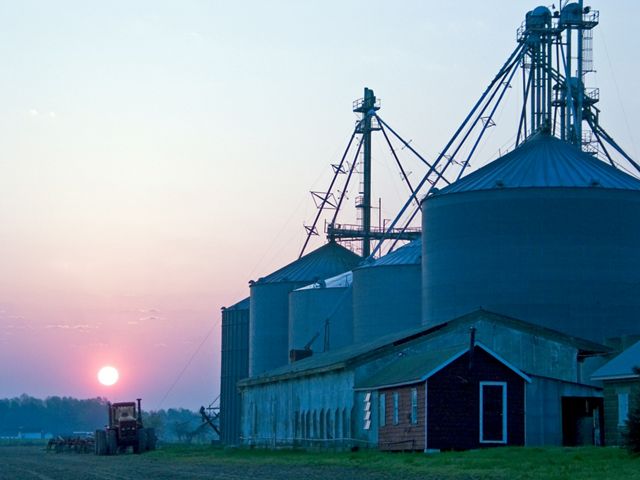
6. WORKING COLLABORATIVELY WITH DELMARVA FARMERS AND LANDOWNERS
What’s one effective way to keep cleaner water flowing into the Bay? Getting to it at the source; right when it first hits the ground as rainfall.
That's why we're collaborating with farmers and agribusinesses on Maryland’s Eastern Shore to accelerate the adoption of new and emerging technologies and best practices, from the precision application of fertilizer on fields to planting natural buffers between the fields and streams to help absord nutrients before they reach the Chesapeake Bay.
With our partners at the Delaware-Maryland Agribusiness Association, and through the Chesapeake 4R Alliance, we connected with more than 1,600 farmers on the Eastern Shore of Maryland in 2018, providing tools and education to help them farm more efficiently and more sustainably. This work leads to healthier bottom lines for farmers and a healthier Bay for people and nature.
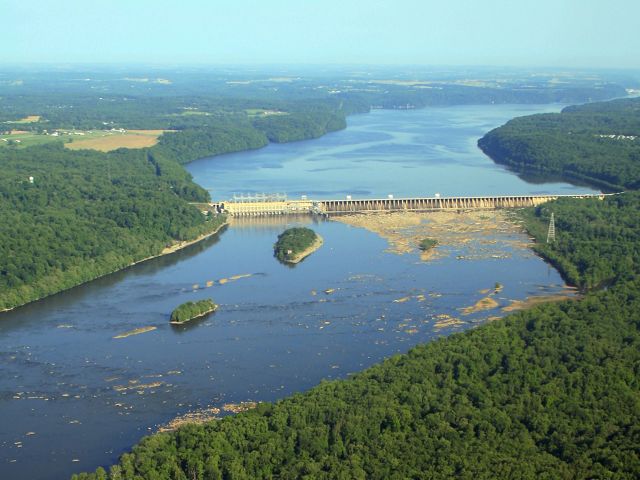
7. IMPROVING FISH POPULATIONS: SUSQUEHANNA FISH PASSAGE AGREEMENT
Every minute, almost 19 million gallons of freshwater flows into the Chesapeake Bay via its largest tributary, the Susquehanna River. The river is one of the region’s most important sources of energy production. It also plays a crucial role as a nursery for huge numbers of migratory fish.
During the dam’s recent relicensing, we worked directly with both the US Fish and Wildlife Service and Exelon Corporation to ensure a new settlement agreement would significantly improve the number of fish migrating over the dam to and from spawning grounds and reflect the goal of restoring self-sustaining populations of millions of shad, river herring and American eel to the Susquehanna River.
8. REDUCING STORMWATER RUNOFF AND POLLUTION IN WASHINGTON, D.C.
Stormwater run-off is the fastest growing source of water pollution in the Chesapeake Bay, making it a top priority for us. We have been a leading proponent behind an innovative new approach to reducing stormwater pollution in the District, one that engages the open market to build stormwater-capturing green infrastructure projects around the city.
Thanks to DC’s Stormwater Retention Credit Trading Program, developers can meet their city mandated requirements for capturing stormwater by paying for credits generated by offsite projects like rain gardens, green roofs, and permeable pavement that are helping reduce the amount of stormwater runoff in the District.
In 2018, we replaced approximately 18,000 square feet of impervious surface with rain gardens in the initial phase of a two-phased project at Washington, D.C.'s historic Mount Olivet Cemetery. The first-of-its-kind green infrastructure project is expected to prevent the runoff of millions of gallons of stormwater into the nearby Anacostia River, while also serving as a model to other cities around the country.
Our financial partners on this project didn’t just make this work possible—they also helped show the world a new way to lever up investor capital to drive conservation. Because of the District’s progressive regulations and the potential to generate cash flow by selling credits generated from the project, our investors are seeing a profitable return. Prudential Financial provided the capital, while Encourage Capital brokered the deal and helped to found District Stormwater, LLC, in conjunction with NatureVest, TNC's impact investing unit.
9. USING NATURE TO HELP PROTECT COASTAL COMMUNITIES FROM EROSION AND FLOODING
Maryland has over 7,000 miles of shoreline, found mostly along the Chesapeake Bay, its network of tidal rivers, and the Atlantic coast. Natural coastal features such as wetlands and forests play a crucial role as a first line of defense from storms and rising seas. We call these natural features our “green suit of armor.”
On Maryland's Deal Island, we're working with partners from George Mason University and Maryland DNR to study how green infrastructure like forests, dunes, and marsh can help reduce the impacts of flooding on vulnerable Eastern Shore communities.
In Virginia, The Nature Conservancy and a consortium of partners - including the Accomack-Northampton Planning Commission, University of Virginia, and NASA-Wallops Flight Facility – released the first iteration of the Coastal Resilience online mapping tool for Virginia’s Eastern Shore.
The Coastal Resilience tool will help coastal communities of the Eastern Shore examine different flooding scenarios from sea level rise and storm surge, analyze the potential impacts on communities, natural resources and critical infrastructure, and inform a range of potential risk reduction and mitigation actions.
10. 10 Billion for the Bay
In 2019 The Nature Conservancy became a part of the Chesapeake Oyster Alliance, a multi-year effort designed to spark governmental action, public attention and funding to accelerate ongoing oyster restoration efforts in the Chesapeake Bay.
The ambitious goal of this collaborative effort is to add 10 billion oysters by 2025 in Virginia and Maryland waters.
The key components of the effort are restoring oysters in sanctuaries and reaching the goal of restoration in 10 bay tributaries by 2025; improving science-based fishery management; and increasing oyster aquaculture, providing economic opportunity for the bay's coastal communities while helping protect the wild shellfish resources and providing filtration and habitat benefits.
Make a Difference
By every measure, the Chesapeake Bay is healthier than it was even five years ago. Through the continued efforts of dedicated partners, and with your support, the Chesapeake Bay has the potential to be the most dramatic example of environmental recovery ever seen.


